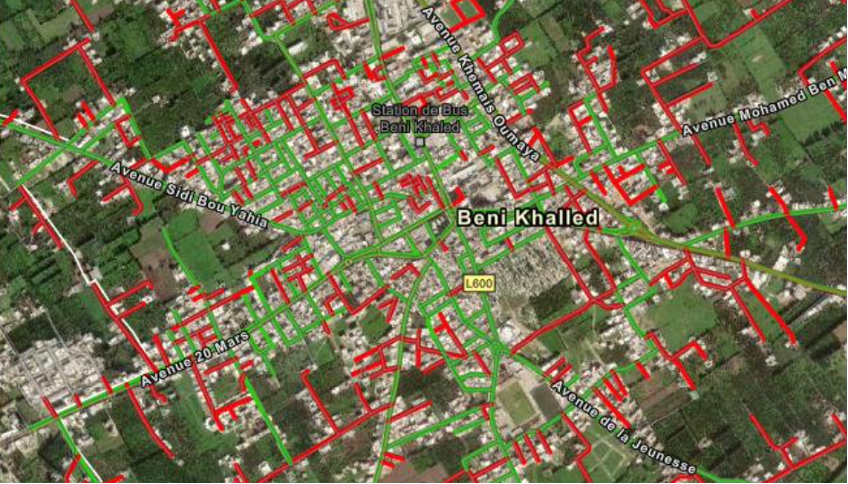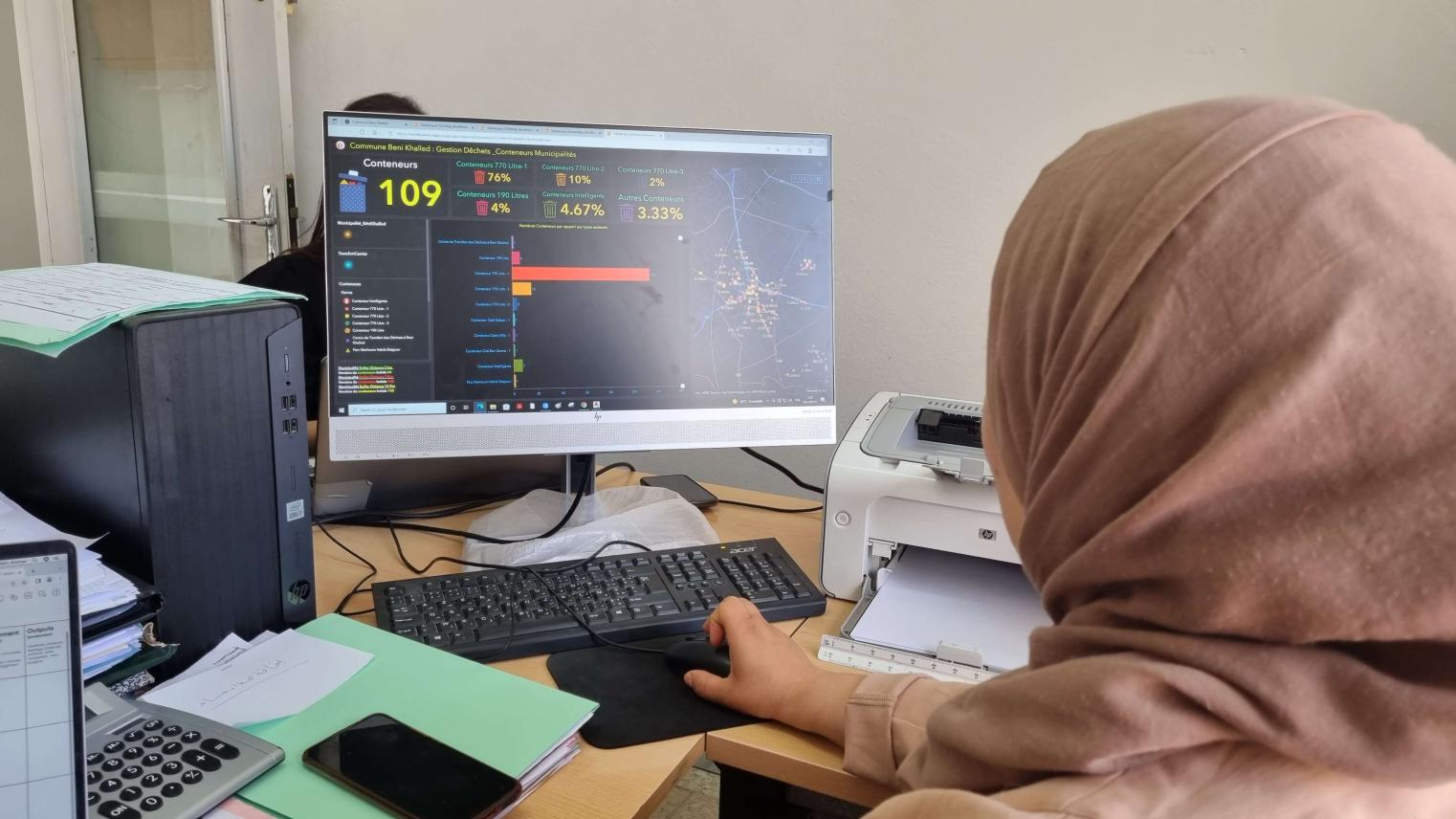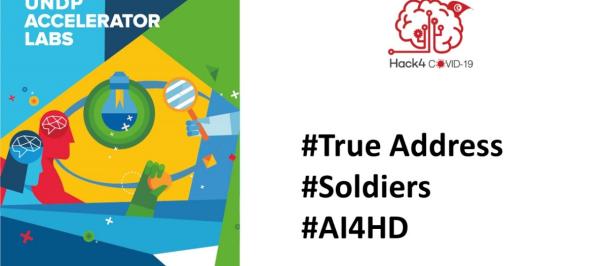By : Nadia Ben Ammar
Relying on new sources of data at municipal level : a road full of behavioral ambushes.
7 février 2023
UNDP Tunisia’s Accelerator Lab has partnered with the municipality of Beni Khalled to experiment the implementation of a GIS system focused on citizen generated data in the context of waste management.
To better understand the design of this experiment, learning questions as well as the hypotheses initially formulated, you can read our previous blog on the subject (Exploring the optimization of waste management in Beni Khalled, GIS and citizen data for change: the case of waste management in Beni Khalled).
In this blog we explore how this experiment has impacted the organizational culture, mindsets and processes of the municipality. We also highlight further learning questions to better understand how municipalities can shift towards using citizen data to improve decision-making and to strengthen responsive service delivery in areas such as waste management.
Learn to embrace the unexpected
Streets with no names\

Picture 1: Street maps of Beni Khalled as generated by the municipal GIS system
Using an open approach to learning, one which values emergence, can lead to serendipity and unpredicted positive impacts. The GIS system implemented in Beni Khalled was meant to probe three aspects in the system, namely (a) waste management and its optimization, (b) citizen participation in data production at the local level as well as (c) understanding how trust dynamics can be improved between citizens and local public institutions. To our understanding, the data created by citizens was mainly meant to improve how the municipality manages waste in the region. When the first street map of the region was shared with the municipality management and staff, they discovered, together with the UNDP team, that 70% of the streets in Beni Khalled do not have a name, thereby making it difficult for people to navigate through the streets, and/or receive anything through the post. A first municipal decision was, thus, the creation of a committee to name streets in a participative way involving citizens.
Participatory budgets and GIS data
Participatory budgets are allocated from the central administration to the municipality every year, following a process involving municipal staff, citizens, and elected council members. The process begins with an assessment to determine priority areas for development projects which are carried at the local level. The municipality uses a set of indicators for this evaluation, typically ones which have been produced and used for decades. The results of this assessment are then presented to the for their feedback on prioritized neighborhoods. In Beni Khalled, this has changed with the newly implemented GIS system, with data generated data on waste management. As a result, it was decided to include this new set of data in the list of indicators for the participatory project priority assessment. This was not initially foreseen as an application of the GIS and truly changes the participation paradigm where citizens are implicated in the creation of data and not mere passive approval of it.
Old habits die hard, new habits are born harder
Change always tends to be accompanied by resistance, which is a well-anticipated aspect of change management. This change often means that we cannot let go of old habits. Even more problematic can be adopting novel processes, tools, and approaches.

Picture 2 : Urban planning officer in municipality using the GIS system
After numerous meetings with the municipality management and technical teams, it became clear that instating new habits and processes can be a difficult task, despite capacity reinforcement and the best of intentions. Indeed, the change process that UNDP’s accelerator lab has accompanied with the municipality has consisted of establishing a GIS system at the municipal level, creating detailed maps of the region and layering information about streets, waste management elements (such as collection points, trucks, and routes). We then proceeded with trainings to the technical municipal staff to master the tools and software of the GIS system, including how to integrate data from citizens. Adapting the waste collection routes however was not a simple task . Changing the routes implied a cross department communication between the technical, decision making and execution spheres. Typically, this was done from the management to the execution level; in this case, inputs originated from the technical team and citizens so that the chain of data production and the flow of information changed. Communications between the technical and management team on insights from the GIS data was not part of typical working processes and moments had to be found to bring this new habit onboard; this however turned out to be a difficult step. We hypothesized that starting with a less difficult and substantial commitment could make this easier and suggested a 30 minute a week meeting . Indeed, according to our stakeholders, bigger commitments which were not realistic given the lack of human resources made the process seem constraining and impacted their motivation and self-efficacy to kick-off the process. It seems that flatter management structures are more advantageous for innovations to be absorbed in similar contexts.
Integration and optimization
Change always tends to be accompanied by resistance, which is a well-anticipated aspect of change management. This change often means that we cannot let go of old habits. Even more problematic can be adopting novel processes, tools, and approaches.

Figure 1: Additional feedback loop demonstrating importance of integrating new system into existing organizational processes
It is important to note that as far as impact is involved, the staff trained on the GIS system who found the new GIS tools help them optimize their current work and initial functions in the municipality were more likely to use the system on a daily basis as it facilitates their usual tasks and helps them make their functions “evolve” while those who found the system to bring an additional load to their daily tasks had a tendency to use the system much less. This shows the importance of integrating new tools and systems into existing habits and functions and the effect this has on motivating staff to use a newly introduced system.
Civil society to the rescue: a more flexible culture ?
Involving civil society and creating bridges of collaboration on GIS with the municipality has proven to bring about positive changes. In addition to IT equipment, a local NGO has provided the municipality with a local IT graduate to work as a GIS intern and provide additional support to current staff who were trained on the GIS system as they both have their usual workload to handle on top of the new functions. If anything, this has also taught us a great deal about the level of flexibility required in a municipality in order to adopt a new approach. Procedures are heavy, even for simple processes such as hiring an intern.
Trust and incentives: getting the crowd involved
While the citizen data has been launched since March 2022, the municipality staff were witnessing very little complaints and data coming from the field. When they asked people in their entourage about this, they were told that citizens must see evidence that this effort on their part will be met with reactivity from the municipality. “They simply do not trust municipal staff will use this data in any way”. The hypothesis formulated here was that demonstrating to citizens how this data is used and an entire cycle involving data creation, reception and then reaction from the staff would encourage citizens to be more proactive. The municipality has thus decided to take actual user story and document and communicate it genuinely through social media to demonstrate to others that it does work.

Figure 2: Additional feedback loop demonstrating importance of citizens attitudes towards GIS data
Overall, we could hardly qualify our experiment in Beni Khalled as an example of perfect assimilation and success, but all obstacles encountered in this experimental journey revealed a bit more about the system functioning, boundaries and prompted more hypotheses and learning questions for us to explore. Overall, we are looking at citizen mindsets and incentives so further tests will be done in the behavioral realm. We will also test a few hypotheses in terms of organizational culture and skillsets.

 Locations
Locations



